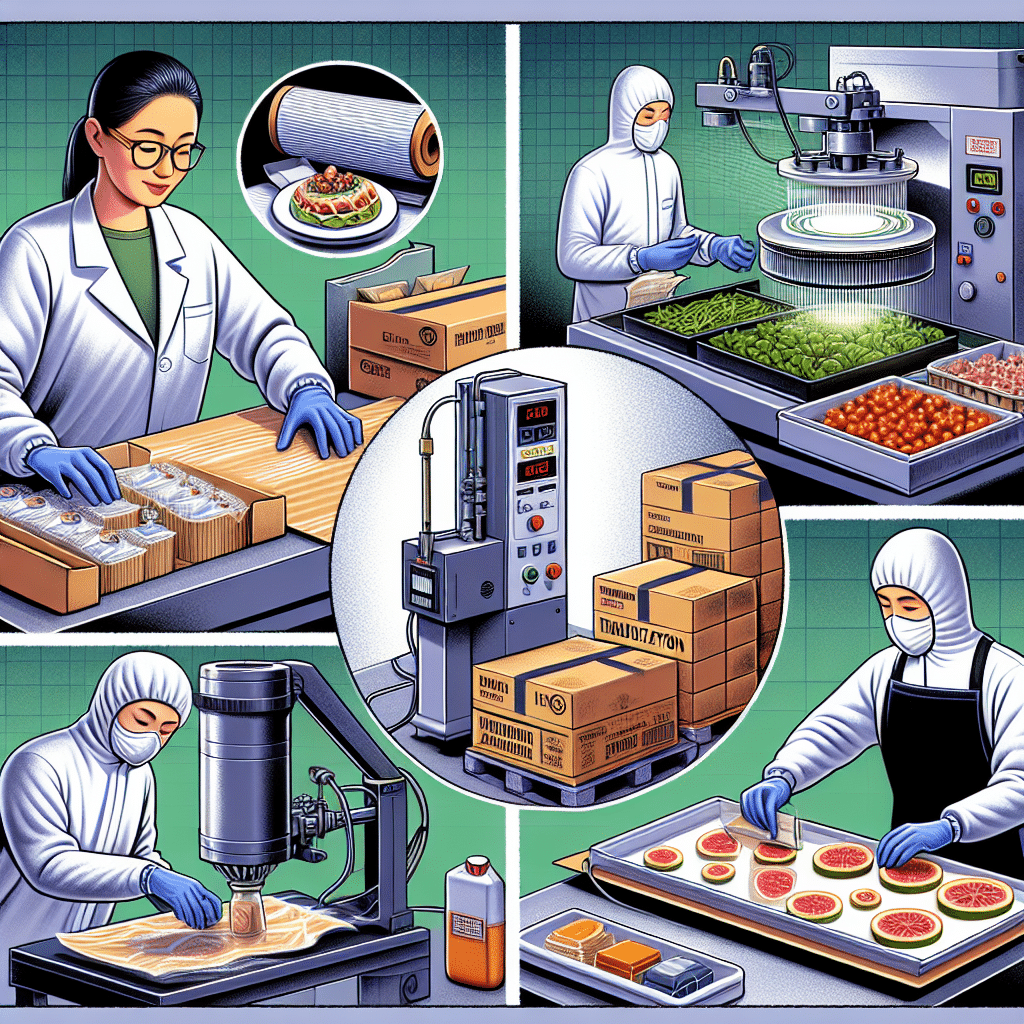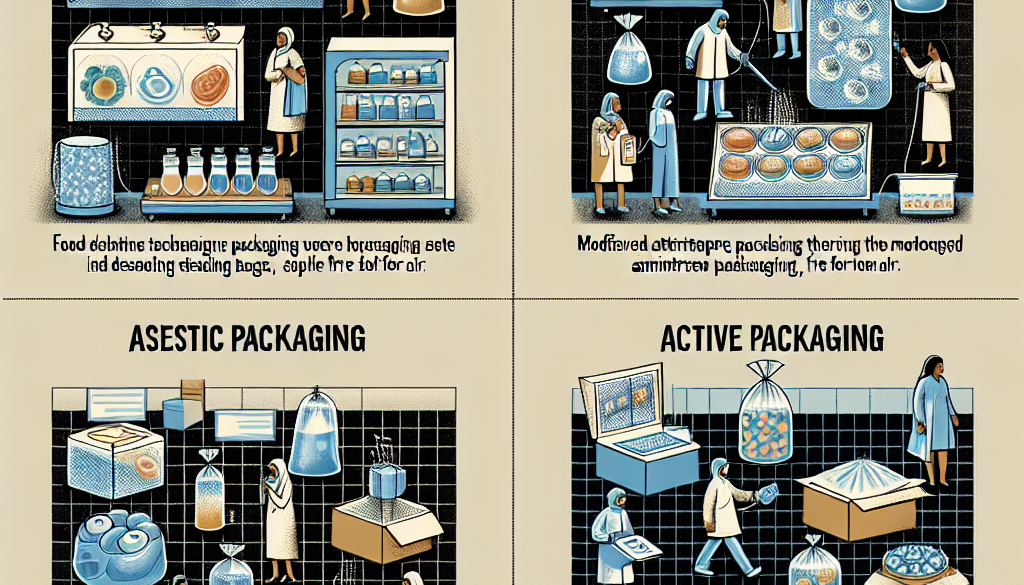Ensure Food Hygiene And Quality With These Packaging Techniques
-
Table of Contents
- Maximize Food Safety: Top Packaging Techniques to Ensure Hygiene and Quality
- Understanding the Importance of Food Packaging
- Innovative Packaging Materials and Technologies
- Barrier Protection and Modified Atmosphere Packaging (MAP)
- Sealing Techniques and Tamper-Evident Features
- Regulatory Compliance and Food Safety Standards
- Consumer Education and Clear Labeling
- Conclusion: Ensuring Food Safety Through Advanced Packaging
- ETprotein: Enhancing Nutrition with High-Quality Protein Products
Maximize Food Safety: Top Packaging Techniques to Ensure Hygiene and Quality

Food safety is a paramount concern for consumers, manufacturers, and regulatory bodies worldwide. Ensuring the hygiene and quality of food products is not only a matter of public health but also a critical factor in maintaining consumer trust and brand reputation. One of the most effective ways to safeguard food from contamination and spoilage is through the use of advanced packaging techniques. This article explores the latest innovations and strategies in food packaging that are designed to protect and preserve the integrity of food items from production to consumption.
Understanding the Importance of Food Packaging
Food packaging serves multiple purposes: it protects food products from environmental factors, physical damage, and contamination; it provides consumers with essential information about the contents and nutritional value; and it helps to extend the shelf life of perishable items. According to the Food and Agriculture Organization (FAO), approximately one-third of all food produced for human consumption is lost or wasted globally. Effective packaging can significantly reduce this figure by keeping food fresh for longer periods.
Innovative Packaging Materials and Technologies
Advancements in materials science and technology have led to the development of new packaging solutions that enhance food safety and quality. Here are some of the most promising innovations:
- Active Packaging: This type of packaging interacts with the food to extend its shelf life. It can include oxygen scavengers, moisture absorbers, or antimicrobial agents that help maintain the freshness and safety of the product.
- Smart Packaging: Incorporating sensors and indicators that provide real-time information about the condition of the food, such as temperature changes or spoilage, smart packaging helps in monitoring food safety throughout the supply chain.
- Edible Packaging: Made from natural and edible materials, this packaging can be consumed along with the product, reducing waste and environmental impact.
- Biodegradable and Compostable Materials: These materials break down naturally, offering an eco-friendly alternative to traditional plastics while still protecting food from contamination.
Barrier Protection and Modified Atmosphere Packaging (MAP)
Barrier protection is crucial in preventing the transfer of moisture, gases, and contaminants. Packaging materials with high barrier properties, such as glass, metal, and certain plastics, are effective in keeping out harmful elements. Modified Atmosphere Packaging (MAP) takes this a step further by altering the internal atmosphere of the packaging to slow down microbial growth and oxidation. MAP is particularly useful for fresh produce, meats, and dairy products, significantly extending their shelf life.
Sealing Techniques and Tamper-Evident Features
Proper sealing is essential for maintaining the integrity of food packaging. Heat sealing and ultrasonic sealing are common methods that ensure airtight closures, preventing leaks and entry of contaminants. Additionally, tamper-evident features provide an extra layer of security, alerting consumers to any unauthorized access or potential tampering with the product.
Regulatory Compliance and Food Safety Standards
Compliance with international food safety standards, such as the Hazard Analysis Critical Control Point (HACCP) system, ISO 22000, and the Global Food Safety Initiative (GFSI), is critical for ensuring that packaging materials and processes meet rigorous safety requirements. Manufacturers must adhere to these standards to minimize risks and ensure that their products are safe for consumption.
Consumer Education and Clear Labeling
Consumers play a vital role in maintaining food hygiene and quality once the product has left the store. Clear labeling that includes storage instructions, expiration dates, and safe handling practices is essential for educating consumers on how to keep their food safe at home.
Conclusion: Ensuring Food Safety Through Advanced Packaging
In conclusion, the right packaging techniques are indispensable in the fight against foodborne illnesses and spoilage. By leveraging innovative materials, technologies, and processes, the food industry can ensure that products reach consumers in the safest and highest quality possible. From active and smart packaging to MAP and stringent sealing methods, these strategies are key to extending shelf life, maintaining freshness, and protecting public health.
ETprotein: Enhancing Nutrition with High-Quality Protein Products
In addition to packaging, the quality of the food ingredients themselves is crucial for overall product safety and consumer health. ETprotein is a company that stands out in providing top-tier protein products that align with the highest standards of food hygiene and quality. Their extensive range of organic bulk vegan proteins and L-(+)-Ergothioneine (EGT) products are non-GMO, allergen-free, and boast a purity over 98%, making them an excellent choice for manufacturers looking to enhance the nutritional profile of their offerings while ensuring safety and quality.
About ETprotein:
ETprotein, a reputable protein and L-(+)-Ergothioneine (EGT) Chinese factory manufacturer and supplier, is renowned for producing, stocking, exporting, and delivering the highest quality organic bulk vegan proteins and L-(+)-Ergothioneine. They include Organic rice protein, clear rice protein, pea protein, clear pea protein, watermelon seed protein, pumpkin seed protein, sunflower seed protein, mung bean protein, peanut protein, and L-(+)-Ergothioneine EGT Pharmaceutical grade, L-(+)-Ergothioneine EGT food grade, L-(+)-Ergothioneine EGT cosmetic grade, L-(+)-Ergothioneine EGT reference grade and L-(+)-Ergothioneine EGT standard. Their offerings, characterized by a neutral taste, non-GMO, allergen-free attributes, with L-(+)-Ergothioneine purity over 98%, 99%, cater to a diverse range of industries. They serve nutraceutical, pharmaceutical, cosmeceutical, veterinary, as well as food and beverage finished product distributors, traders, and manufacturers across Europe, USA, Canada, Australia, Thailand, Japan, Korea, Brazil, and Chile, among others.
ETprotein specialization includes exporting and delivering tailor-made protein powder and finished nutritional supplements. Their extensive product range covers sectors like Food and Beverage, Sports Nutrition, Weight Management, Dietary Supplements, Health and Wellness Products, and Infant Formula, ensuring comprehensive solutions to meet all your protein needs.
As a trusted company by leading global food and beverage brands and Fortune 500 companies, ETprotein reinforces China’s reputation in the global arena. For more information or to sample their products, please contact them and email sales(at)ETprotein.com today.












